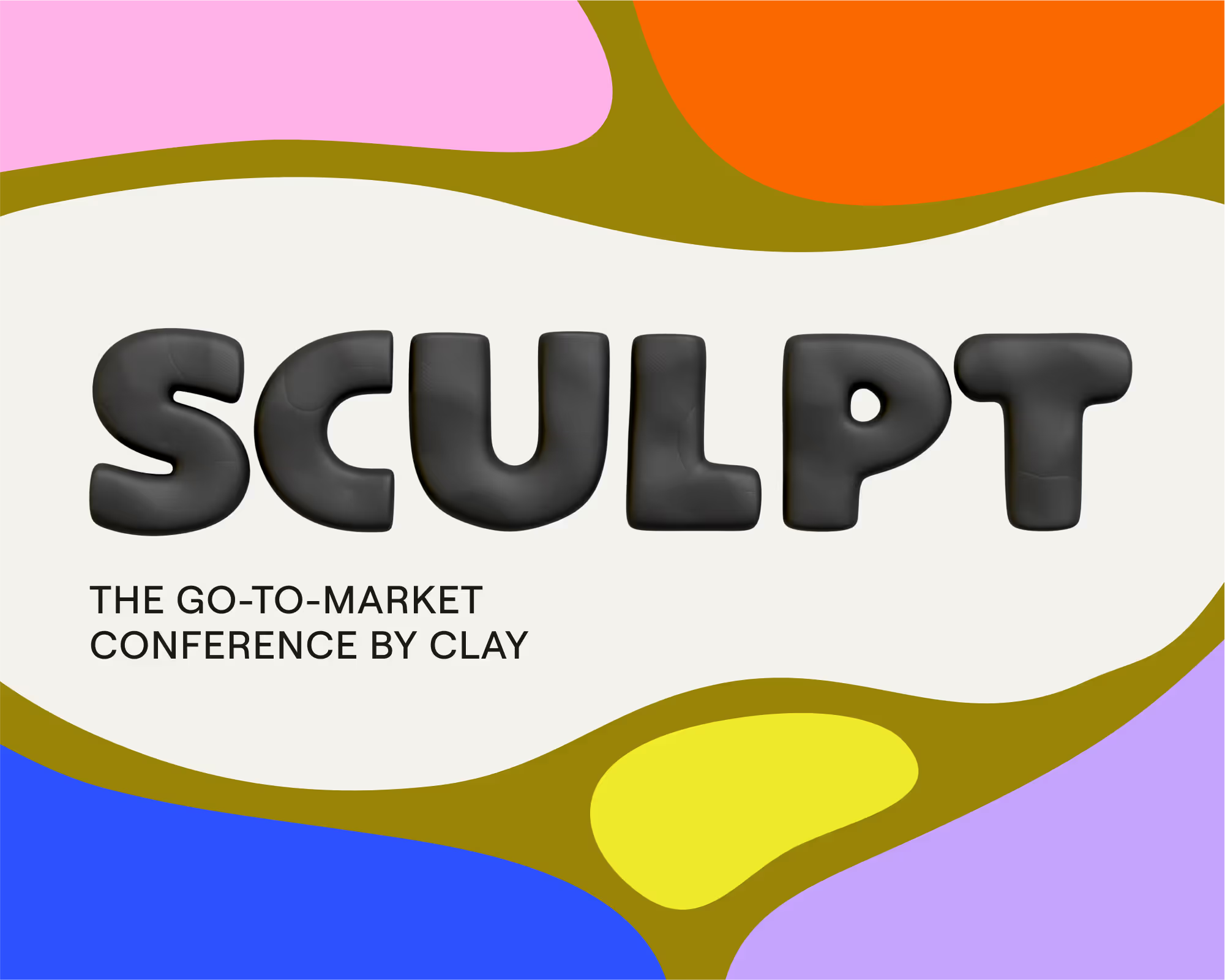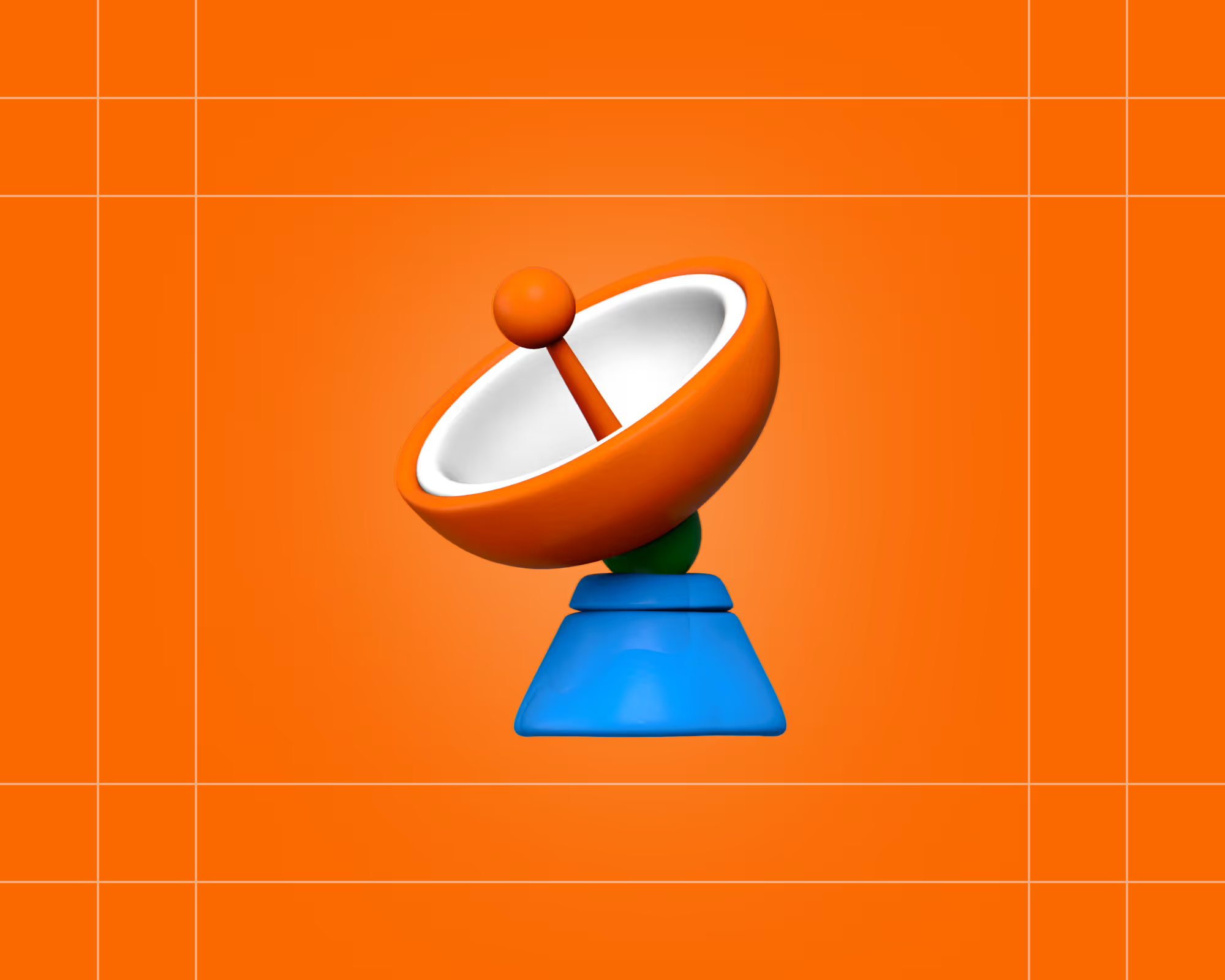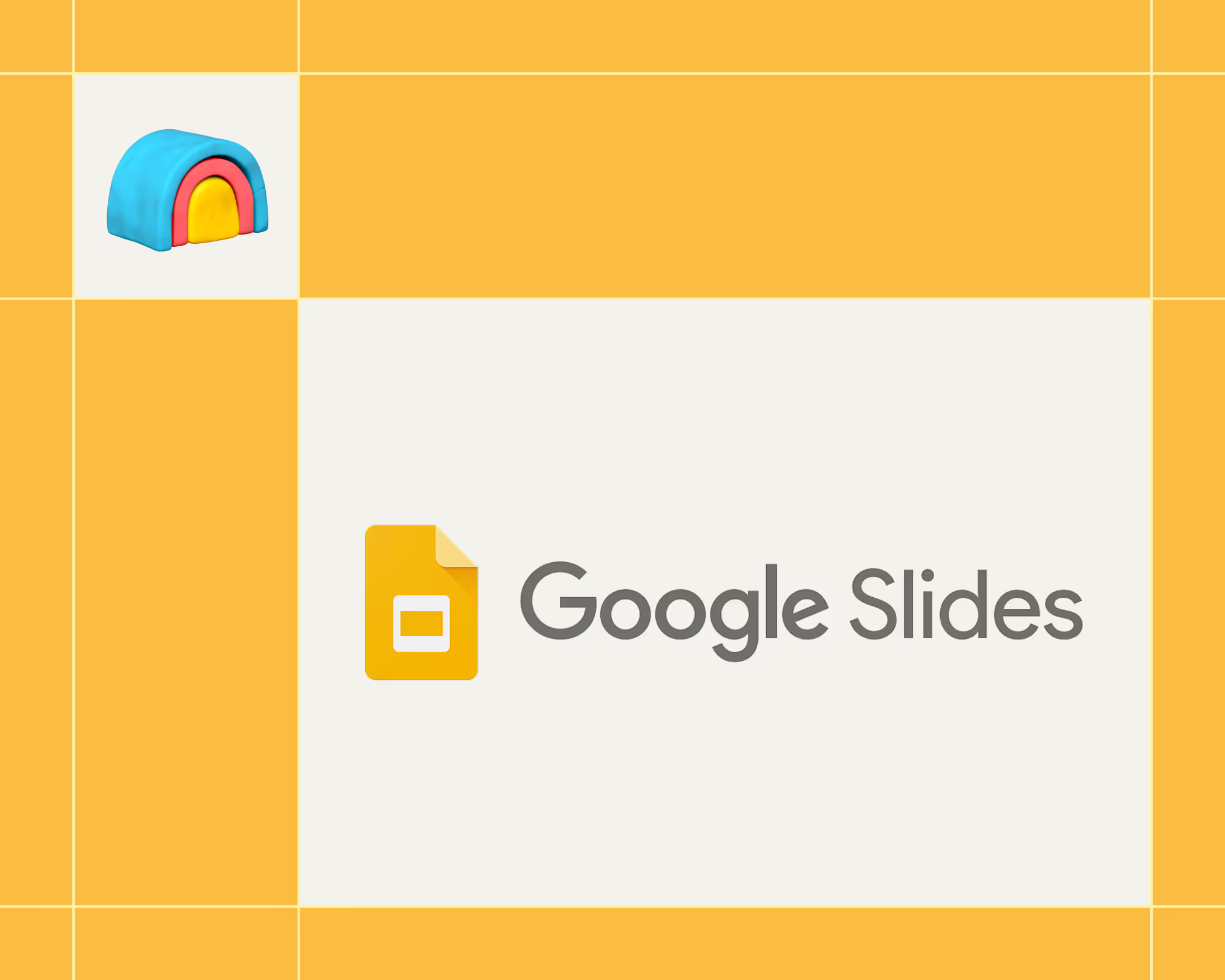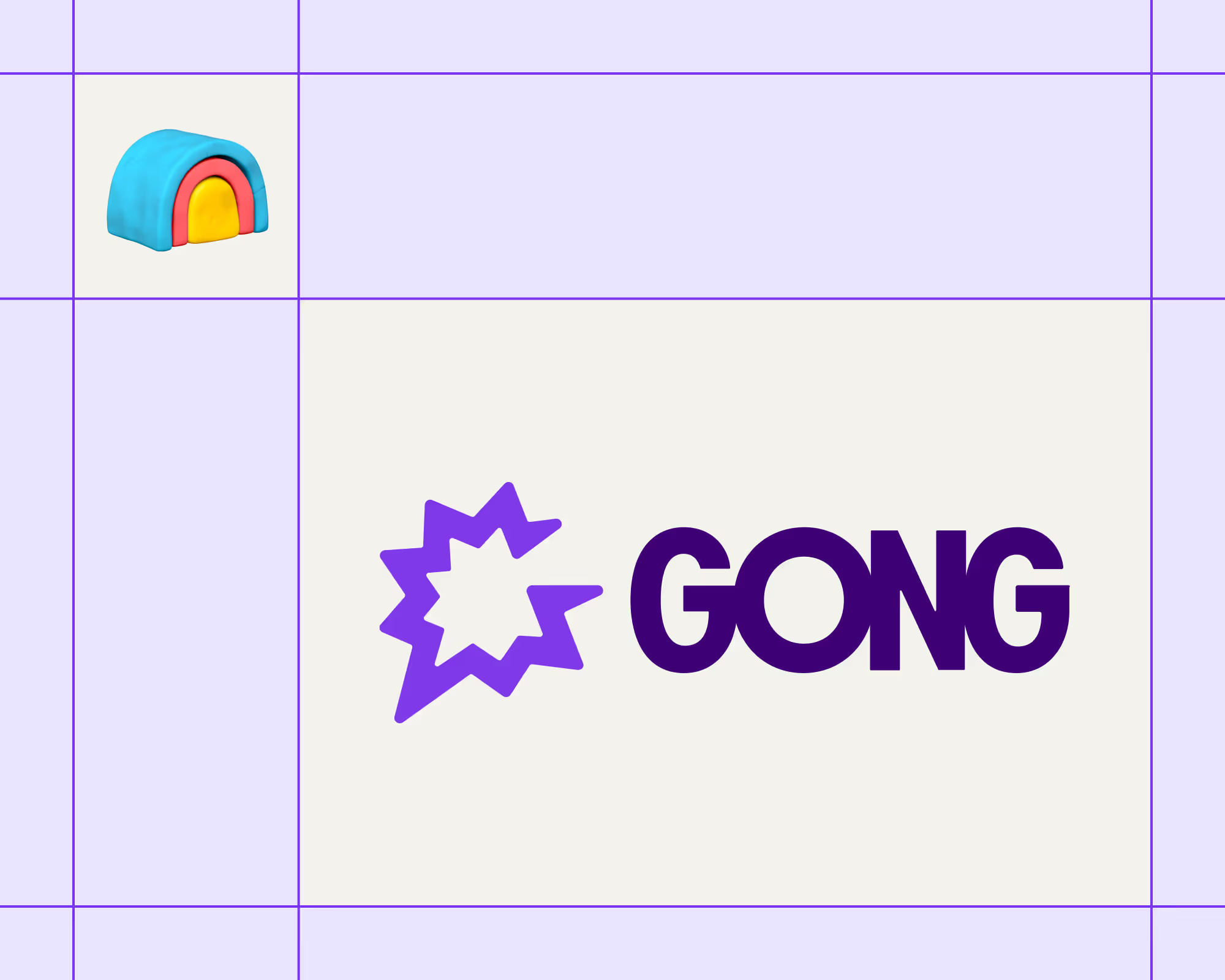Effective lead scoring is essential to adequate resource use. If your SDRs can’t prioritize leads, they might waste time on unqualified prospects instead of getting quick wins by focusing on those ready to buy.
While you can rank leads manually, doing so can be time-consuming and laborious. With the rise of machine learning and predictive analytics, we got a far superior option—AI lead scoring.
Successful implementation of AI in lead scoring and other processes throughout the sales cycle is an excellent way to tighten your workflow. Take our sales process as an example—using AI, we fully automated a 4-step campaign for our outbound sequences, getting a 5.1% positive response rate. 🤩
In this guide, though, we won’t focus on the entire campaign but only on lead scoring. We’ll go through the following:
- What AI lead scoring is and how it works
- Why you should implement AI in lead scoring
- How to leverage AI lead scoring in your sales process
What Is AI Lead Scoring?

AI lead scoring involves using an AI-enabled tool to analyze prospect data and rank leads according to their conversion potential. It differs from traditional automated lead scoring in three aspects:
- Underlying mechanism
- Scoring criteria
- Customization
The following table outlines these differences:
In a nutshell, the primary way AI enhances lead scoring is by removing the need for manual input. The most demanding and time-consuming scoring tasks are fully automated, leaving more time for executive decisions and campaign development.
While the exact process is complicated, the good news is that you don't need to fully understand it to reap the benefits. That’s why we’ll go over the basics to give you a general idea behind AI-powered lead scoring.
How Does AI-Based Lead Scoring Work?
On a high level, AI lead scoring happens in four stages:
- Data collection—The platform gathers data from numerous sources (like your CRM and connected third-party data providers)
- Data analysis—The collected data is analyzed to identify common patterns and highlight correlations between specific data points and successful conversions
- Predictive model creation—The AI tool develops a predictive model based on the identified patterns to understand which leads have the highest conversion potential according to historical data
- Scoring—Prospects are assigned scores according to their individual characteristics and connection to the discovered patterns
Much of this process happens without your direct involvement. All you need to do is provide your platform with relevant, comprehensive data, and it will crunch it to score leads automatically.
Thanks to advanced features and functionalities, your lead scoring solution can perform various additional tasks. See some of the most notable ones in the table below:
💡Bonus read: If you want to learn about the use cases of AI beyond lead scoring, check out our guides on using AI for sales enablement, AI-guided selling, and cold calling.
Key Benefits of AI Lead Scoring

Besides the obvious time savings you can enjoy after implementing an AI lead scoring solution, you can reap plenty of benefits, most notably:
- Increased decision confidence—While AI tools aren’t foolproof, their advanced algorithms support decision-making by seamlessly analyzing comprehensive datasets to provide actionable insights. You can make decisions based on cold data instead of relying on guesswork
- Improved campaign effectiveness—If you need a quick win and want to focus on low-hanging fruit in your pipeline, AI lead scoring helps you identify the warmest leads effortlessly. You can prioritize and target them more efficiently so that your SDRs hit their quotas faster
- Precise personalization—By understanding the key patterns and correlations between prospect data and conversions, you can tweak your outreach strategy to tailor its elements accordingly. Doing so further improves your campaigns’ chances of maximizing conversions
- Cost-effectiveness and increased ROI—AI lead scoring removes inefficiencies, preventing resource waste and manual labor. Combine this with its ability to help you develop more solid campaigns, and you’ll see how the right platform can do wonders for your bottom line
While these advantages are compelling, you can’t reap them overnight—you need to take a methodical approach to AI implementation to ensure success. 💯
Best Practices for Adopting AI Lead Scoring Effectively
To make AI lead scoring an integral part of your sales workflows, you should:
- Understand your target audience
- Ensure you have robust data
- Choose the right AI lead-scoring platform
Understand Your Target Audience

Before you consider adopting any AI solution to streamline your processes—including lead scoring—you must nail down your target audience. Many lead-scoring solutions are geared toward specific audiences, so figuring out your customer persona will help you find the right option.
For example, AI platforms suited for B2B sales are focused on analyzing company data more effectively than individual information. You need to make sure your preferred platform can take into account all the necessary data points to enable effective scoring.
To achieve this, get clear on the following:
- Your target industry (or industries)
- Ideal customer profile (ICP)
- Relevant qualification factors (e.g., number of employees, budget, etc.)
By understanding the above elements, you can ensure your AI lead scoring model accurately qualifies prospects and lets you prioritize them successfully.
Ensure You Have Robust Data
Comprehensive data is the essence of lead scoring, whether you use an AI solution or not. You need numerous data points to analyze buying signals effectively so that you can qualify leads. More importantly, data is essential to campaign personalization, which can make or break your conversions.
If you’re targeting individuals, the data points you need include contact information, demographics, and online behavior data. Similarly, targeting companies means you need to gather the prospective business’s information like:
- Technographics
- Funding
- Personnel
- Industry
In some cases, you might need a mix of company and people data. For example, you may be targeting specific executives of companies, in which case you’ll want to understand them on a personal level instead of only focusing on firmographics.
In any case, you should have a solid data collection and enrichment solution in place before searching for a lead-scoring solution. Even the most capable platforms can’t perform effectively without comprehensive datasets, so prioritize prospect enrichment.
As you’ll see a bit later in this guide, some platforms let you combine effective data enrichment with lead scoring. Such solutions are few and far between, though, especially if you’re looking for a cost-effective one.
Choose the Right AI Lead-Scoring Platform

Since the rise of AI, plenty of lead-scoring platforms leveraging this technology have surfaced—but that doesn’t mean they’re all equally effective. When browsing different solutions, use the following criteria to zero in on the best option:
- 🤖 Scoring options—Some platforms offer AI-assisted lead scoring, while others fully automate the process. Depending on your tech stack and workflows, you can choose the option that best supports your current processes
- 🔢 Training data—AI platforms can be trained on external customer data or the specific data you feed it. There’s no right or wrong here—it all comes down to whether you have sufficient data to opt for the latter option or want to augment the results with external data
- ❓ Transparency—You should know precisely how your scoring solution qualifies leads. This way, you can understand the specific criteria to know whether it includes your deal-breakers
- 📈 Data preparation—Some platforms automatically clean up data before leveraging it to score leads. Unless you already have a data cleansing platform, choosing such solutions might be beneficial for removing manual work and ensuring accuracy
- ⚡ Ease of use—While AI solutions typically increase efficiency, some may do the opposite through a complex and hard-to-navigate interface. Avoid such solutions so that you don’t expose your SDRs to unnecessary work
- 💸 Cost—Despite advanced algorithms and many use cases, AI lead-scoring platforms shouldn’t break the bank. If you research your options thoroughly, you can find a solution that fits your budget
Potential Pitfalls of AI Lead Scoring
Before you adopt an AI lead-scoring solution, you should keep in mind a few potential pitfalls. The main issues are explained in the following table:
If you need an AI-enabled solution that can help you avoid these issues and score leads more effortlessly, Clay can be an excellent option. 🚀
Score Leads and Turn Them Into Buyers With Clay

Clay is an AI-powered data enrichment and sales automation solution that streamlines various sales processes, including lead scoring. It lets you create custom scoring formulas based on virtually any criteria, from a prospect’s role to a company’s headcount.
To help you avoid manual scoring, Clay is equipped with various AI features that handle the heavy lifting. 🦾
The first one is Claygent—an advanced AI researcher and assistant that can uncover virtually any information about prospects based on simple prompts. For example, you can set up automated scoring based on a prospect’s previously used software solutions and tell Claygent to scour prospects’ LinkedIn profiles for relevant information and assign a score accordingly.

To further simplify data collection and scoring, Clay integrates with OpenAI, letting you harness the power of ChatGPT. You can use the integration to complete numerous tasks, such as:
- Using AI to ask ChatGPT questions about your prospects
- Completing ChatGPT prompts for more effective research and scoring
- Analyzing images to obtain relevant information that isn’t in the text format
Combining Clay’s OpenAI integration with Claygent is a powerful way to obtain plenty of data you can use for lead scoring. If you don’t want to set up scoring workflows from scratch, you can leverage Clay templates to automatically score leads based on several criteria, such as their work history and other professional data. 🤓
Want to see Clay’s automated lead scoring in action? Check out this quick tutorial:
Uncover Robust Data and Act On It Without Hassle
To enable lead scoring with outstanding accuracy, Clay lets you find out everything you need to know about your prospects without any manual work. It integrates with over 50 data providers, letting you explore their databases directly from Clay without juggling additional accounts and contracts.
Clay also uses waterfall enrichment—a hands-off approach to data collection that lets the platform scour your preferred databases one by one until it finds the info you need. You can enrich people and companies with plenty of data points, such as:
- Contact information
- Firmographics
- Technographics
- Social media updates
All this data is automatically added to your Clay table, from which you can run scoring formulas in no more than a few clicks. ⚡
If you want a more hands-on way of getting the data you need, you can use Clay’s Chrome extension. It lets you pull data from pages as you visit them either automatically with pre-built recipes or manually through custom recipes for enhanced flexibility.
After collecting the data you need and scoring leads, Clay can target each prospect with a hyper-personalized email at scale, thanks to its AI message writer. It automatically pulls data from the Clay table to write custom emails in seconds, letting you instantly automate email sequences.
Thanks to Clay’s robust integrations, you can push data to your CRM or send emails to your sequencer seamlessly and execute effective campaigns without bottlenecks.
Full-Circle Sales Support for Everyone’s Budget
Clay lets you find, enrich, and score leads, after which it crafts custom messages for each prospect to streamline and automate all resource-intensive tasks. You can do all of this at no cost thanks to Clay’s robust free plan.
The free plan doesn’t expire, and you get 100 monthly credits to see Clay’s features in action. If you need more credits and want to unlock advanced features, you can choose between four affordable paid tiers:
With each plan, you can choose between several credit amounts to ensure minimal waste and get the most out of your investment.
Judging by users’ experiences with Clay, the platform is an excellent long-term investment in your sales cycle—here’s what one customer had to say:

Create Your Free Clay Account
To unlock the full potential of AI in lead scoring and plenty of other sales processes, you can get started with Clay in three quick steps:
- Go to the signup page ✒️
- Enter your name, email, and password 📧
- Browse Clay’s comprehensive features 💪
You can explore Clay University for more tutorials and tips on getting the most out of the platform. Feel free to also join the platform’s Slack community to see how other sales teams are using Clay in their workflow. For relevant updates and actionable outreach tips, sign up for Clay’s newsletter.
💡 Keep reading: Want to learn more about leveraging AI throughout the sales cycle? Have a look at these articles:
Effective lead scoring is essential to adequate resource use. If your SDRs can’t prioritize leads, they might waste time on unqualified prospects instead of getting quick wins by focusing on those ready to buy.
While you can rank leads manually, doing so can be time-consuming and laborious. With the rise of machine learning and predictive analytics, we got a far superior option—AI lead scoring.
Successful implementation of AI in lead scoring and other processes throughout the sales cycle is an excellent way to tighten your workflow. Take our sales process as an example—using AI, we fully automated a 4-step campaign for our outbound sequences, getting a 5.1% positive response rate. 🤩
In this guide, though, we won’t focus on the entire campaign but only on lead scoring. We’ll go through the following:
- What AI lead scoring is and how it works
- Why you should implement AI in lead scoring
- How to leverage AI lead scoring in your sales process
What Is AI Lead Scoring?

AI lead scoring involves using an AI-enabled tool to analyze prospect data and rank leads according to their conversion potential. It differs from traditional automated lead scoring in three aspects:
- Underlying mechanism
- Scoring criteria
- Customization
The following table outlines these differences:
In a nutshell, the primary way AI enhances lead scoring is by removing the need for manual input. The most demanding and time-consuming scoring tasks are fully automated, leaving more time for executive decisions and campaign development.
While the exact process is complicated, the good news is that you don't need to fully understand it to reap the benefits. That’s why we’ll go over the basics to give you a general idea behind AI-powered lead scoring.
How Does AI-Based Lead Scoring Work?
On a high level, AI lead scoring happens in four stages:
- Data collection—The platform gathers data from numerous sources (like your CRM and connected third-party data providers)
- Data analysis—The collected data is analyzed to identify common patterns and highlight correlations between specific data points and successful conversions
- Predictive model creation—The AI tool develops a predictive model based on the identified patterns to understand which leads have the highest conversion potential according to historical data
- Scoring—Prospects are assigned scores according to their individual characteristics and connection to the discovered patterns
Much of this process happens without your direct involvement. All you need to do is provide your platform with relevant, comprehensive data, and it will crunch it to score leads automatically.
Thanks to advanced features and functionalities, your lead scoring solution can perform various additional tasks. See some of the most notable ones in the table below:
💡Bonus read: If you want to learn about the use cases of AI beyond lead scoring, check out our guides on using AI for sales enablement, AI-guided selling, and cold calling.
Key Benefits of AI Lead Scoring

Besides the obvious time savings you can enjoy after implementing an AI lead scoring solution, you can reap plenty of benefits, most notably:
- Increased decision confidence—While AI tools aren’t foolproof, their advanced algorithms support decision-making by seamlessly analyzing comprehensive datasets to provide actionable insights. You can make decisions based on cold data instead of relying on guesswork
- Improved campaign effectiveness—If you need a quick win and want to focus on low-hanging fruit in your pipeline, AI lead scoring helps you identify the warmest leads effortlessly. You can prioritize and target them more efficiently so that your SDRs hit their quotas faster
- Precise personalization—By understanding the key patterns and correlations between prospect data and conversions, you can tweak your outreach strategy to tailor its elements accordingly. Doing so further improves your campaigns’ chances of maximizing conversions
- Cost-effectiveness and increased ROI—AI lead scoring removes inefficiencies, preventing resource waste and manual labor. Combine this with its ability to help you develop more solid campaigns, and you’ll see how the right platform can do wonders for your bottom line
While these advantages are compelling, you can’t reap them overnight—you need to take a methodical approach to AI implementation to ensure success. 💯
Best Practices for Adopting AI Lead Scoring Effectively
To make AI lead scoring an integral part of your sales workflows, you should:
- Understand your target audience
- Ensure you have robust data
- Choose the right AI lead-scoring platform
Understand Your Target Audience

Before you consider adopting any AI solution to streamline your processes—including lead scoring—you must nail down your target audience. Many lead-scoring solutions are geared toward specific audiences, so figuring out your customer persona will help you find the right option.
For example, AI platforms suited for B2B sales are focused on analyzing company data more effectively than individual information. You need to make sure your preferred platform can take into account all the necessary data points to enable effective scoring.
To achieve this, get clear on the following:
- Your target industry (or industries)
- Ideal customer profile (ICP)
- Relevant qualification factors (e.g., number of employees, budget, etc.)
By understanding the above elements, you can ensure your AI lead scoring model accurately qualifies prospects and lets you prioritize them successfully.
Ensure You Have Robust Data
Comprehensive data is the essence of lead scoring, whether you use an AI solution or not. You need numerous data points to analyze buying signals effectively so that you can qualify leads. More importantly, data is essential to campaign personalization, which can make or break your conversions.
If you’re targeting individuals, the data points you need include contact information, demographics, and online behavior data. Similarly, targeting companies means you need to gather the prospective business’s information like:
- Technographics
- Funding
- Personnel
- Industry
In some cases, you might need a mix of company and people data. For example, you may be targeting specific executives of companies, in which case you’ll want to understand them on a personal level instead of only focusing on firmographics.
In any case, you should have a solid data collection and enrichment solution in place before searching for a lead-scoring solution. Even the most capable platforms can’t perform effectively without comprehensive datasets, so prioritize prospect enrichment.
As you’ll see a bit later in this guide, some platforms let you combine effective data enrichment with lead scoring. Such solutions are few and far between, though, especially if you’re looking for a cost-effective one.
Choose the Right AI Lead-Scoring Platform

Since the rise of AI, plenty of lead-scoring platforms leveraging this technology have surfaced—but that doesn’t mean they’re all equally effective. When browsing different solutions, use the following criteria to zero in on the best option:
- 🤖 Scoring options—Some platforms offer AI-assisted lead scoring, while others fully automate the process. Depending on your tech stack and workflows, you can choose the option that best supports your current processes
- 🔢 Training data—AI platforms can be trained on external customer data or the specific data you feed it. There’s no right or wrong here—it all comes down to whether you have sufficient data to opt for the latter option or want to augment the results with external data
- ❓ Transparency—You should know precisely how your scoring solution qualifies leads. This way, you can understand the specific criteria to know whether it includes your deal-breakers
- 📈 Data preparation—Some platforms automatically clean up data before leveraging it to score leads. Unless you already have a data cleansing platform, choosing such solutions might be beneficial for removing manual work and ensuring accuracy
- ⚡ Ease of use—While AI solutions typically increase efficiency, some may do the opposite through a complex and hard-to-navigate interface. Avoid such solutions so that you don’t expose your SDRs to unnecessary work
- 💸 Cost—Despite advanced algorithms and many use cases, AI lead-scoring platforms shouldn’t break the bank. If you research your options thoroughly, you can find a solution that fits your budget
Potential Pitfalls of AI Lead Scoring
Before you adopt an AI lead-scoring solution, you should keep in mind a few potential pitfalls. The main issues are explained in the following table:
If you need an AI-enabled solution that can help you avoid these issues and score leads more effortlessly, Clay can be an excellent option. 🚀
Score Leads and Turn Them Into Buyers With Clay

Clay is an AI-powered data enrichment and sales automation solution that streamlines various sales processes, including lead scoring. It lets you create custom scoring formulas based on virtually any criteria, from a prospect’s role to a company’s headcount.
To help you avoid manual scoring, Clay is equipped with various AI features that handle the heavy lifting. 🦾
The first one is Claygent—an advanced AI researcher and assistant that can uncover virtually any information about prospects based on simple prompts. For example, you can set up automated scoring based on a prospect’s previously used software solutions and tell Claygent to scour prospects’ LinkedIn profiles for relevant information and assign a score accordingly.

To further simplify data collection and scoring, Clay integrates with OpenAI, letting you harness the power of ChatGPT. You can use the integration to complete numerous tasks, such as:
- Using AI to ask ChatGPT questions about your prospects
- Completing ChatGPT prompts for more effective research and scoring
- Analyzing images to obtain relevant information that isn’t in the text format
Combining Clay’s OpenAI integration with Claygent is a powerful way to obtain plenty of data you can use for lead scoring. If you don’t want to set up scoring workflows from scratch, you can leverage Clay templates to automatically score leads based on several criteria, such as their work history and other professional data. 🤓
Want to see Clay’s automated lead scoring in action? Check out this quick tutorial:
Uncover Robust Data and Act On It Without Hassle
To enable lead scoring with outstanding accuracy, Clay lets you find out everything you need to know about your prospects without any manual work. It integrates with over 50 data providers, letting you explore their databases directly from Clay without juggling additional accounts and contracts.
Clay also uses waterfall enrichment—a hands-off approach to data collection that lets the platform scour your preferred databases one by one until it finds the info you need. You can enrich people and companies with plenty of data points, such as:
- Contact information
- Firmographics
- Technographics
- Social media updates
All this data is automatically added to your Clay table, from which you can run scoring formulas in no more than a few clicks. ⚡
If you want a more hands-on way of getting the data you need, you can use Clay’s Chrome extension. It lets you pull data from pages as you visit them either automatically with pre-built recipes or manually through custom recipes for enhanced flexibility.
After collecting the data you need and scoring leads, Clay can target each prospect with a hyper-personalized email at scale, thanks to its AI message writer. It automatically pulls data from the Clay table to write custom emails in seconds, letting you instantly automate email sequences.
Thanks to Clay’s robust integrations, you can push data to your CRM or send emails to your sequencer seamlessly and execute effective campaigns without bottlenecks.
Full-Circle Sales Support for Everyone’s Budget
Clay lets you find, enrich, and score leads, after which it crafts custom messages for each prospect to streamline and automate all resource-intensive tasks. You can do all of this at no cost thanks to Clay’s robust free plan.
The free plan doesn’t expire, and you get 100 monthly credits to see Clay’s features in action. If you need more credits and want to unlock advanced features, you can choose between four affordable paid tiers:
With each plan, you can choose between several credit amounts to ensure minimal waste and get the most out of your investment.
Judging by users’ experiences with Clay, the platform is an excellent long-term investment in your sales cycle—here’s what one customer had to say:

Create Your Free Clay Account
To unlock the full potential of AI in lead scoring and plenty of other sales processes, you can get started with Clay in three quick steps:
- Go to the signup page ✒️
- Enter your name, email, and password 📧
- Browse Clay’s comprehensive features 💪
You can explore Clay University for more tutorials and tips on getting the most out of the platform. Feel free to also join the platform’s Slack community to see how other sales teams are using Clay in their workflow. For relevant updates and actionable outreach tips, sign up for Clay’s newsletter.
💡 Keep reading: Want to learn more about leveraging AI throughout the sales cycle? Have a look at these articles:














.avif)








.avif)











.avif)
.avif)






















































